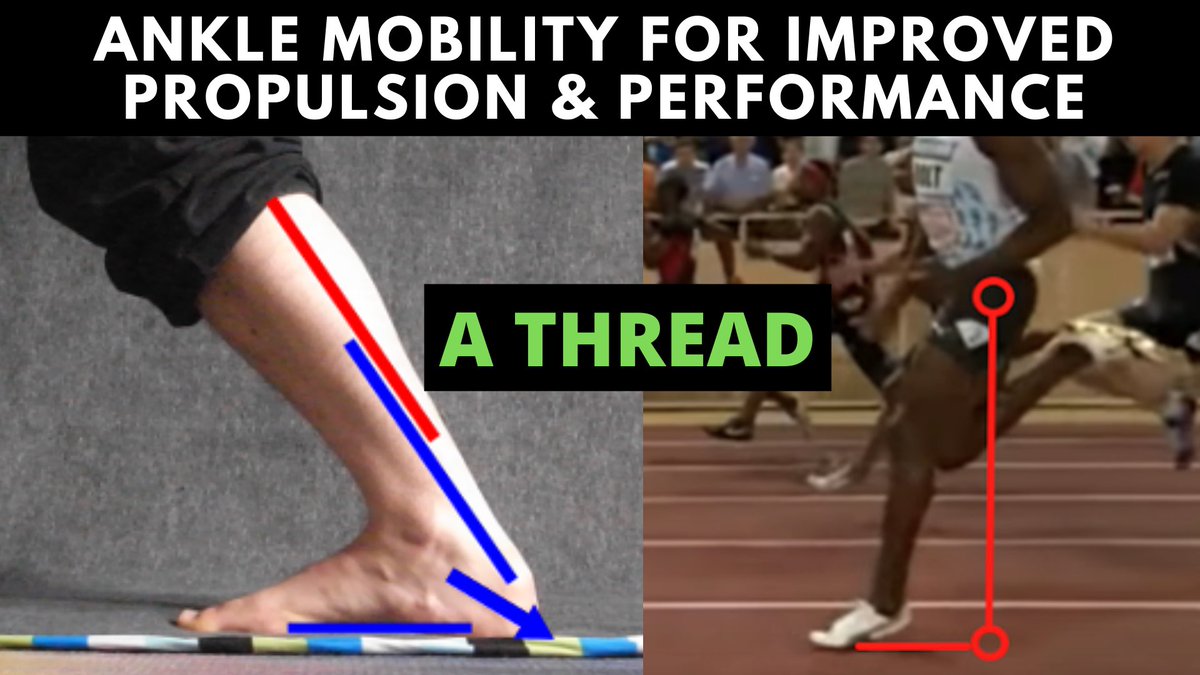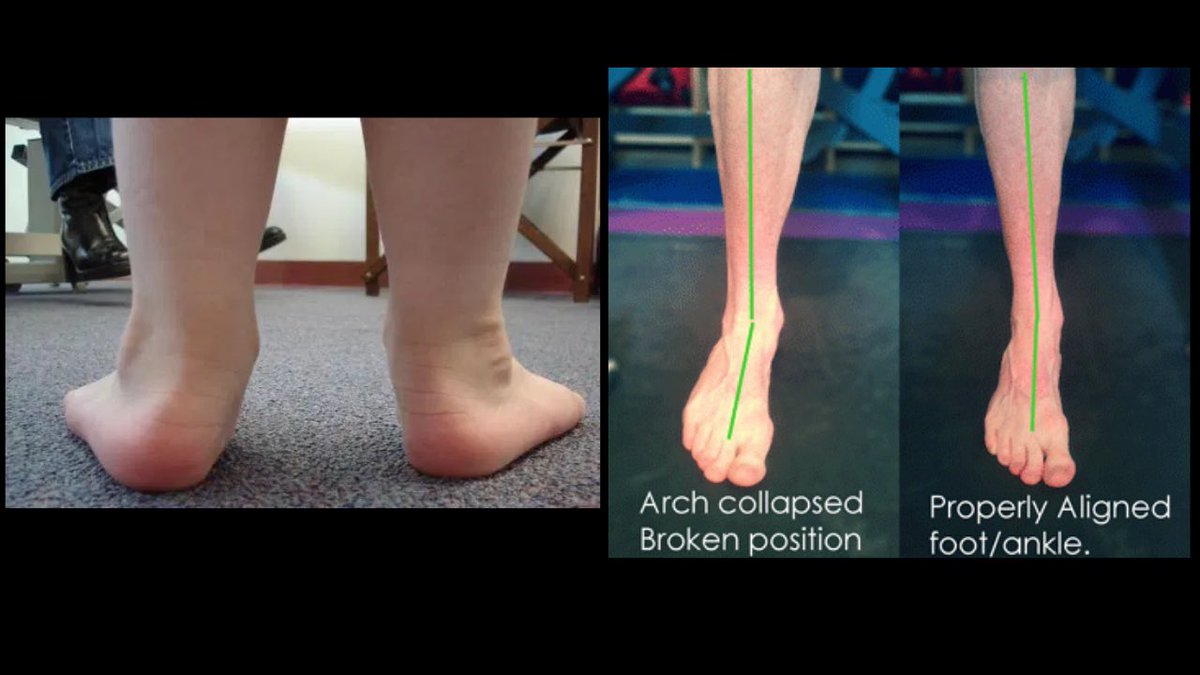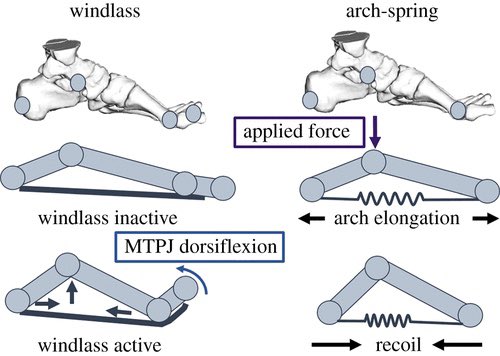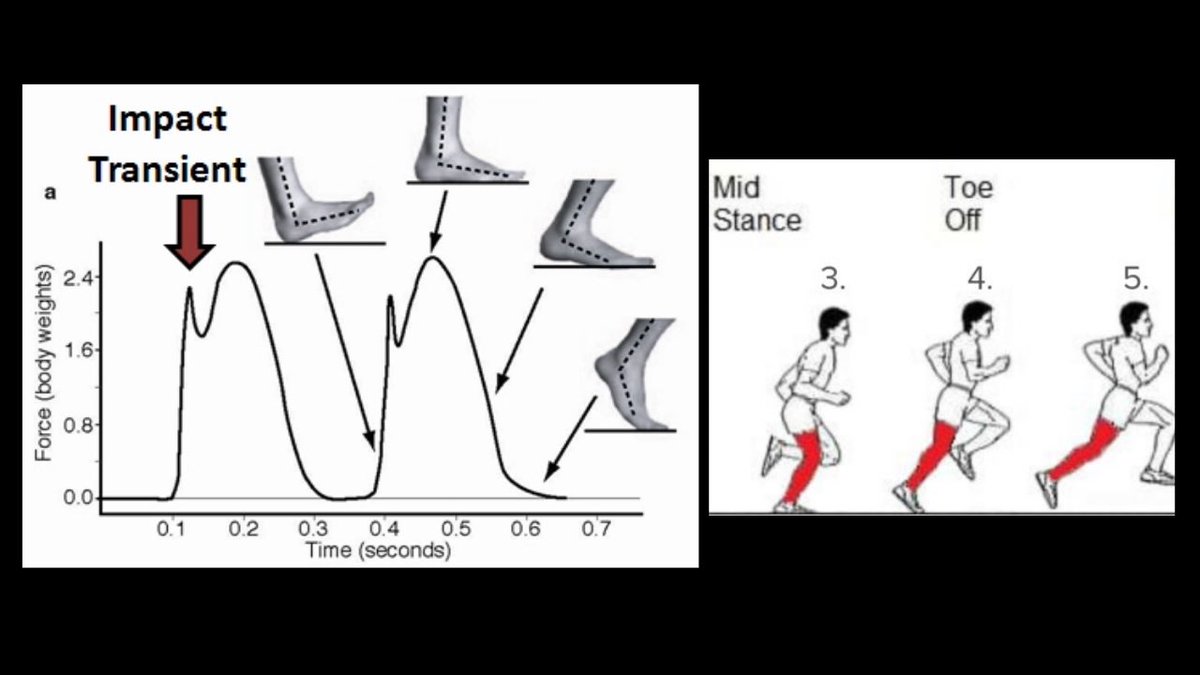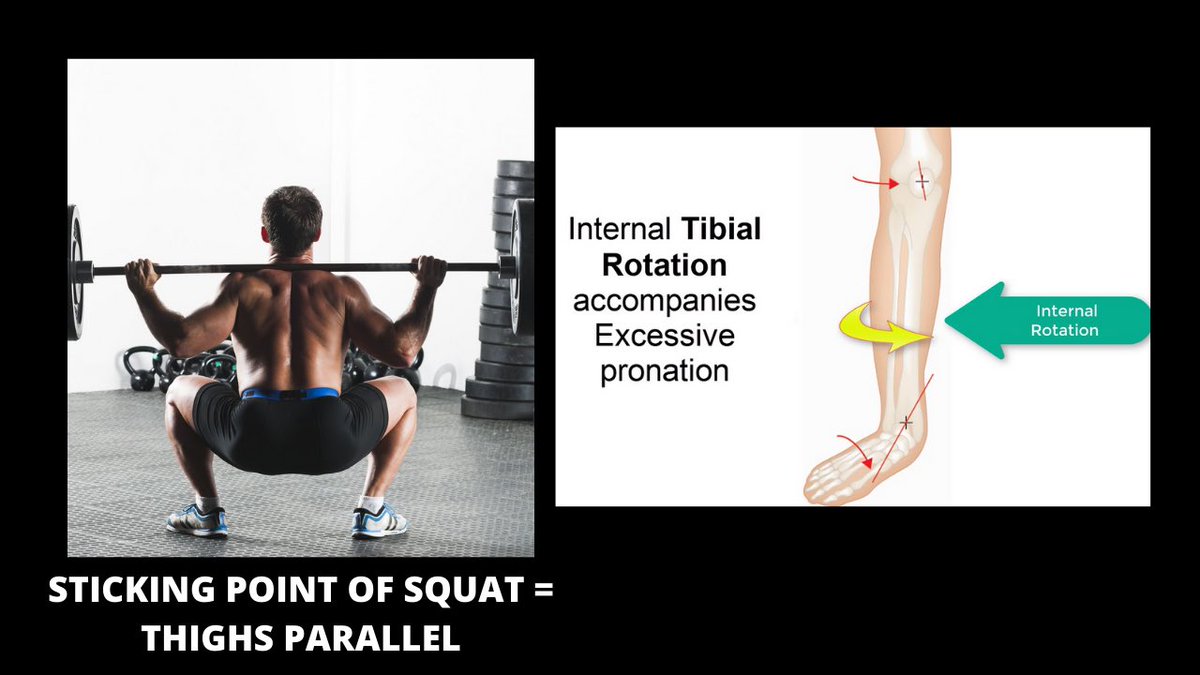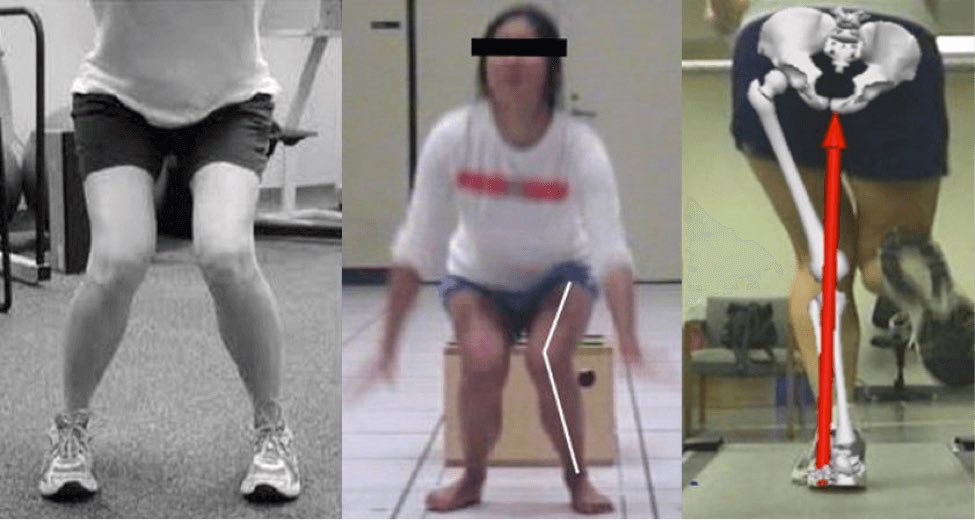A thread on ankle mobility, pronation, common misconceptions, & how to improve it
If you want to:
- Run fast
- Squat/deadlift a lot of weight
- Have good ankle mobility
You want your foot to properly pronate.
Pronation is the transition from force absorption to production...
If you want to:
- Run fast
- Squat/deadlift a lot of weight
- Have good ankle mobility
You want your foot to properly pronate.
Pronation is the transition from force absorption to production...
The biggest misconception I see is that people think pronation is the collapsing inward of the foot as a whole.
That is not the case, and a collapsed foot is indicative of a foot that is likely compensating into pronation, rather than achieving true pronation.
That is not the case, and a collapsed foot is indicative of a foot that is likely compensating into pronation, rather than achieving true pronation.
True pronation of the foot involves relative:
- Tibial internal rotation (IR)
- Rearfoot eversion (turning in)
- Forefoot inversion (turning out)
Pronation occurs most in mid-stance in gait, where it is coupled with relative IR of the hips, femur, and tibia.
- Tibial internal rotation (IR)
- Rearfoot eversion (turning in)
- Forefoot inversion (turning out)
Pronation occurs most in mid-stance in gait, where it is coupled with relative IR of the hips, femur, and tibia.
If you’ve been trying to improve your ankle mobility without success, it could be in part because your foot simply can’t pronate well.
In order for optimal dorsiflexion to occur, optimal pronation has to happen with it.
It is practically impossible to separate the two.
In order for optimal dorsiflexion to occur, optimal pronation has to happen with it.
It is practically impossible to separate the two.
In order to produce force optimally through running/sprinting, the foot arch falls as weight is transferred onto the foot.
The stretch of the plantar (bottom) foot muscles creates a stretch on the muscles that supinate the foot, which is necessary for them to contract for
The stretch of the plantar (bottom) foot muscles creates a stretch on the muscles that supinate the foot, which is necessary for them to contract for
re-supination of the foot upon push-off as the arch “springs” back up. This is called the Windlass Mechanism.
So one could make the argument that pronation leads to re-supination of the foot which = optimal hip extension & propulsion.
So one could make the argument that pronation leads to re-supination of the foot which = optimal hip extension & propulsion.
We often see high level athletes with very pronated feet in a static posture & during running.
This is often because (in my opinion), they utilize this as a (likely effective) compensatory strategy for finding the pronation they need to complete the Windlass Mechanism.
This is often because (in my opinion), they utilize this as a (likely effective) compensatory strategy for finding the pronation they need to complete the Windlass Mechanism.
We also often see people who feel better squatting with their toes pointed outward.
This helps them find pronation, which is coupled with IR at the lower body. Pronation of the foot is necessary at the sticking point of a squat for the lower body to create force through IR.
This helps them find pronation, which is coupled with IR at the lower body. Pronation of the foot is necessary at the sticking point of a squat for the lower body to create force through IR.
This is *not* inherently bad, but if taken too far, you can see a knee valgus moment occur as a lack of pronation at the foot can cause an inwardly collapse of the knee as it tries to find internal rotation.
This applies to any movement requiring pronation & high loads/velocity.
This applies to any movement requiring pronation & high loads/velocity.
To improve pronation, I am a fan of using wedges or a slanted surface (I am partial to Gary Ward’s wedges), to elevate the outside heel and first two toes.
This creates relative tibial IR, rearfoot eversion, and forefoot inversion for optimal mechanics.
Here is an example:
This creates relative tibial IR, rearfoot eversion, and forefoot inversion for optimal mechanics.
Here is an example:
If you don’t have anything to use as a wedge, simply putting a small towel roll under the foot arch can help in dorsiflexion drills.
This helps provide a reference for the arch to “drop into” to help it find pronation:
This helps provide a reference for the arch to “drop into” to help it find pronation:
We also can’t forget about the need for the arch to re-supinate and stay rigid in a supinated state.
To train this, I like heel-float split squats as a method.
To train this, I like heel-float split squats as a method.

 Read on Twitter
Read on Twitter